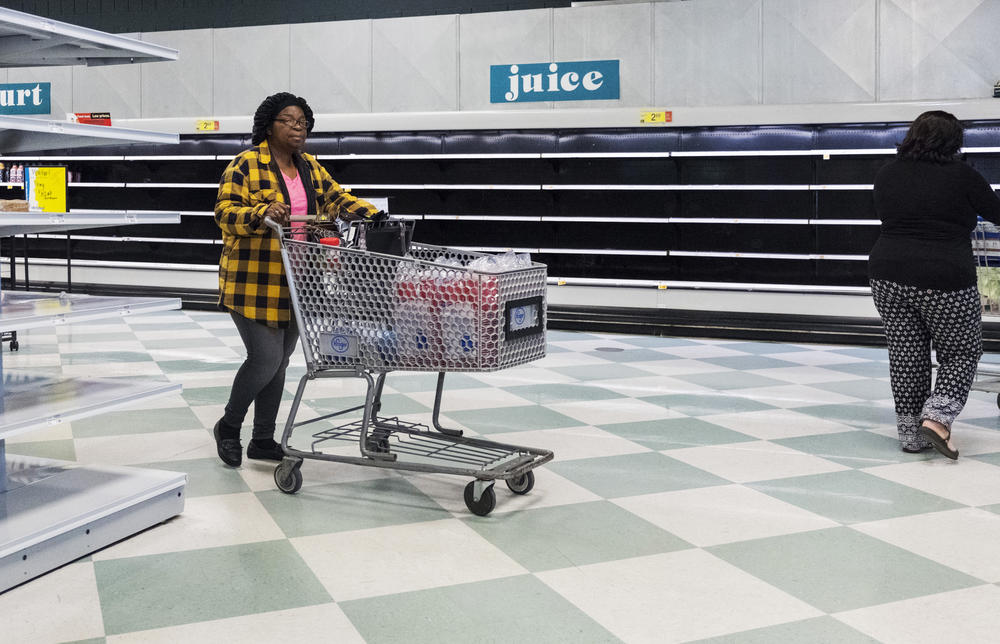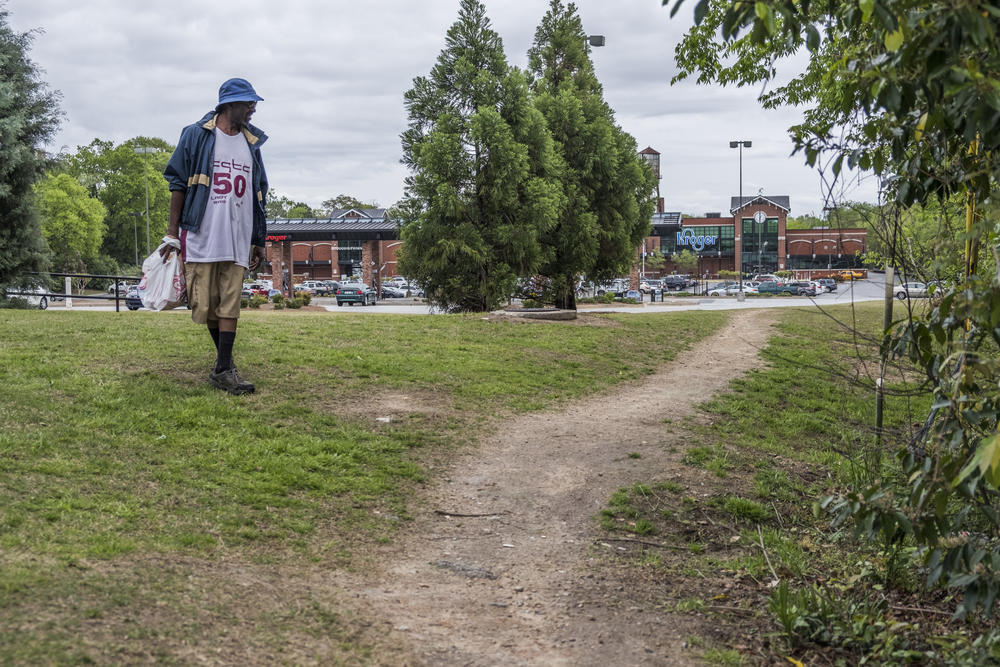Section Branding
Header Content
Looking For An Oasis In Georgia Food Deserts
Primary Content
Looking For An Oasis In Georgia Food Deserts
There’s a little dirt path leading from Pio Nono Avenue to what until not too long ago was a Kroger grocery store. The store’s closed now.
One morning before the closure, Shon Williams walked down the path, headed toward her apartment. Like a lot of people in this neighborhood, she can afford groceries, but she can’t afford a car.
“I got to get my groceries little by little and tote ‘em home like an ant,” she said with a laugh.
Williams was not happy that the convenience store a block away would be her closest option for food. For instance, she asked, what if she wants to buy a box of Cheerios? They’re $2.49 at Kroger, but at the convenience store?
“They will charge me $4,” she said. “Convenience store always going to jack up the prices in, well, might as well say it, poor neighborhoods. Black, poor neighborhoods.”
Throw in the lack of produce, and you’ve got a basic food desert. The U.S. Department of Agriculture defines that as anywhere for reasons of either income or transportation, food is at least a mile away. In rural areas it’s ten miles.
In this food desert in the center of Macon, white people are disproportionately insulated from food insecurity. For one reason, poor, white people are statistically more likely to be given a car loan than black people with the same income. The same is true for neighborhoods with now closed Krogers in Savannah and Memphis, Tennessee, and, really, across food deserts in general. It seems unlikely these stores will reopen.
The residents in Dayton, Ohio, know this story, and they are working on a solution, even if it’s taking a while.
When northwest Dayton lost its Kroger in 2009, a coalition of labor organizers, clergy and other activists wanted to open a store a full sized grocery store in the empty space. Elected city leaders didn’t like that.
The city had another idea, said Lela Klein, executive director of the Greater Dayton Union Co-Op Initiative.
“They said you know you really … this is the kind of project where you have to lead with the business case,” Klein said. “You can't just lead with mission on this.”
So with a little seed money from the city, the community coalition commissioned a market study from an outside vendor. Then they surveyed the community extensively about what food they even wanted to see in a grocery store.
The resulting plan describes the future Dayton’s Gem City Market. It will be about half the size of a normal grocer, stocked based on neighborhood food preferences and owned and operated by customers and the employees. No corporate owners or shareholders in far off places.
“If the last couple of decades have taught us anything, it's that you know these kind of third-party corporate entities are not rooted in our community,” Klein said. “And when it makes business sense for them to close they're going to close.”
Nine years after the death of the Dayton Kroger, the Gem City project is on track and raising money, but there’s been no groundbreaking yet. It can take between five and seven years to get a co-op grocer off the ground.
There are still grocery stores in Macon. It’s just a question of getting there.
Arnez Roberson was another Kroger customer walking to the store a few weeks ago. He couldn’t see himself walking four miles or more to another grocer.
“Oh naw!” he exclaimed, “Ain't going to walk that far. I'm going to have to come up with another solution.”
How about a bus?
In a paper published in the Eastern Economic Journal, economist Deokrye Baek of Wright State University writes that every time a city adds one bus, 150 people get access to food. There are about 25,000 food insecure people in Macon. That’s around 170 or so buses with a pricetag of $85 million. That could be a tough sell in a town with no Sunday bus service. Baek said there’s one more option.
“If it is hard to make consumers mobile, then we may make grocery stores mobile,” she said in a phone interview.
Klein said grocers and pop up farmers markets are taking up some of the the slack in Dayton until the Gem City Market opens.
And right now, Amazon, Walmart and a few other regional grocers accept Supplemental Nutrition Assistance Program benefits, or SNAP, as online payment for grocery delivery in some states. That’s what people used to call food stamps. The 2018 Farm Bill working its way through Congress would allow people in SNAP to use their benefits online anywhere in the country.
Of course, where food is in short supply, internet access often is too. There’s also the chance that the Farm Bill could lose online expansion for SNAP by the time it becomes law. But like Roberson says, people still have to eat.
“This is just another wrinkle,” he said.




